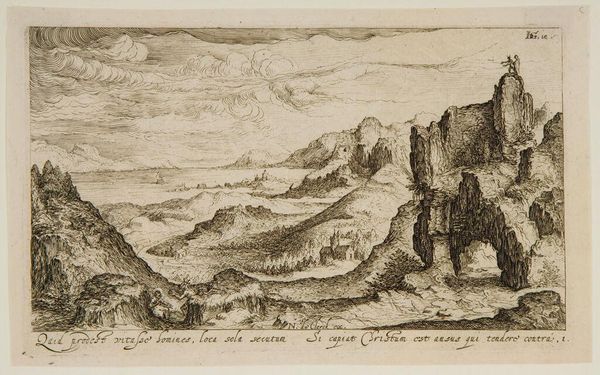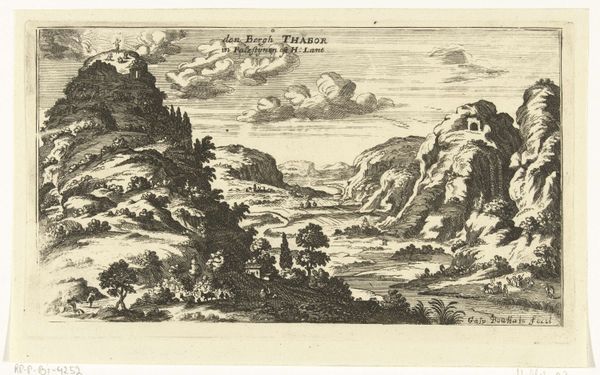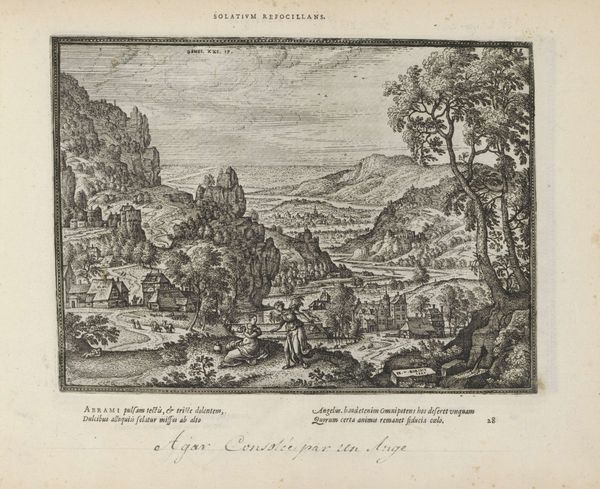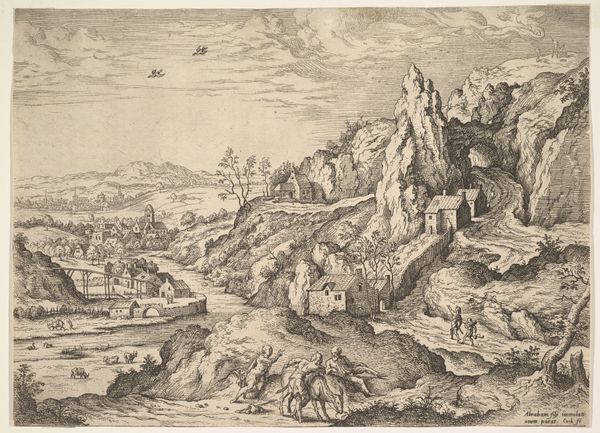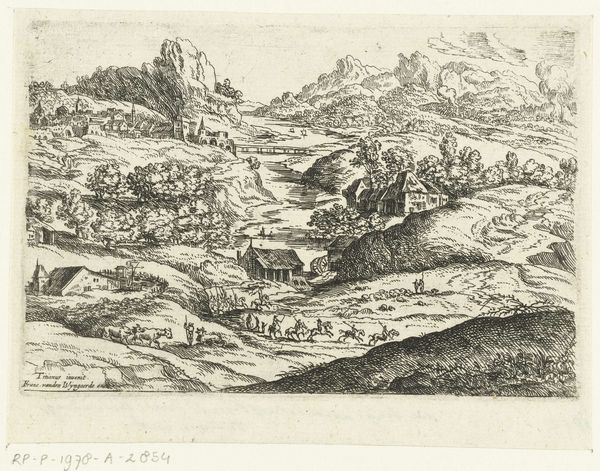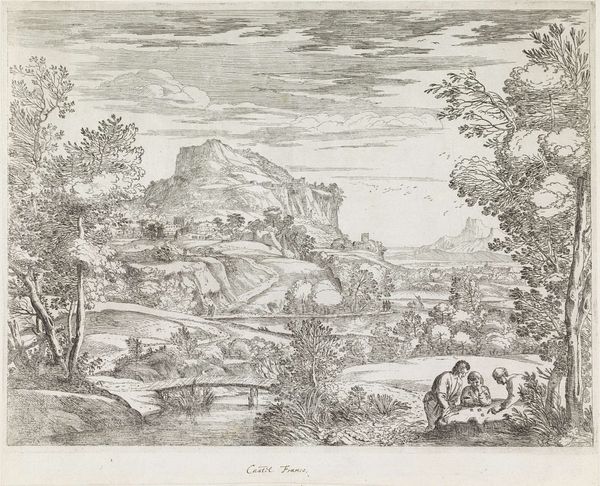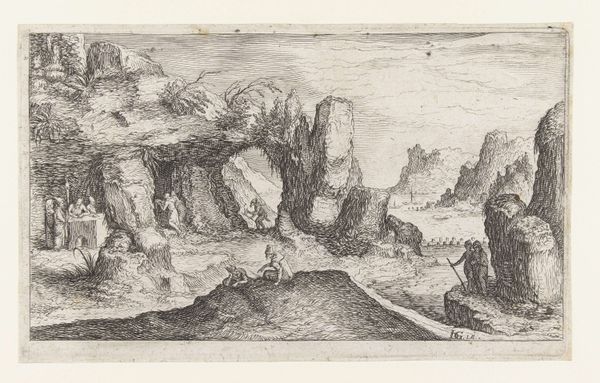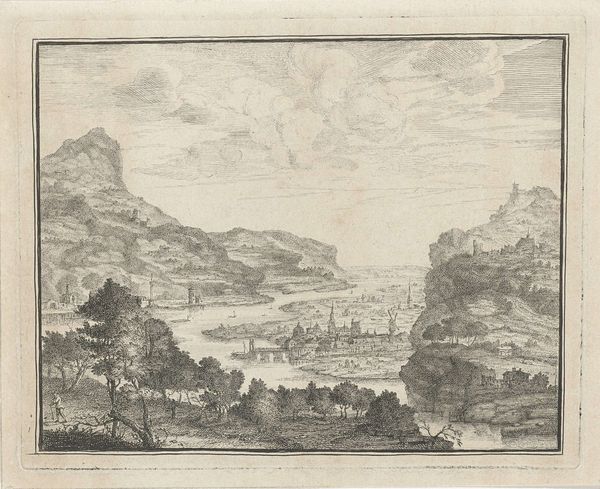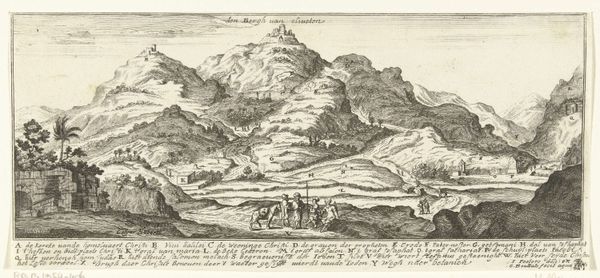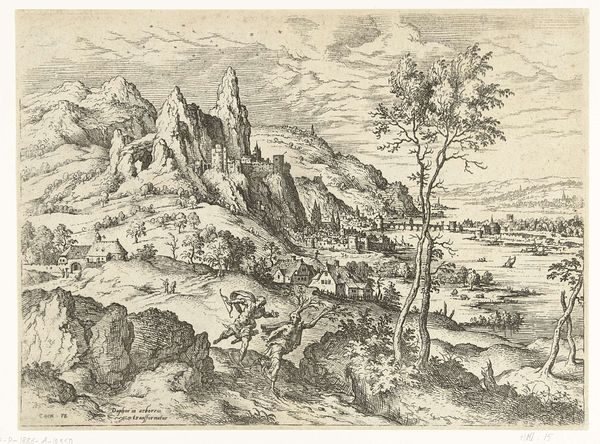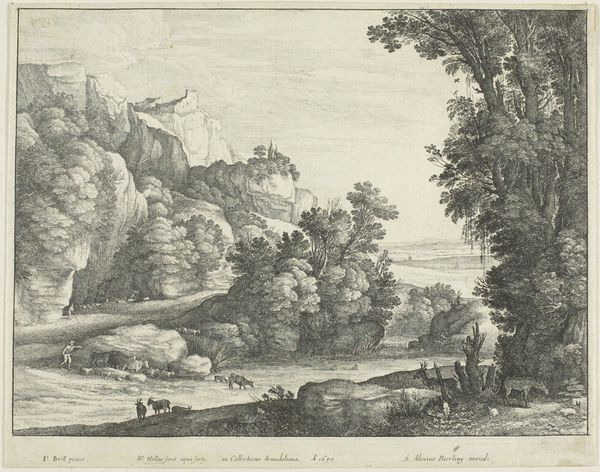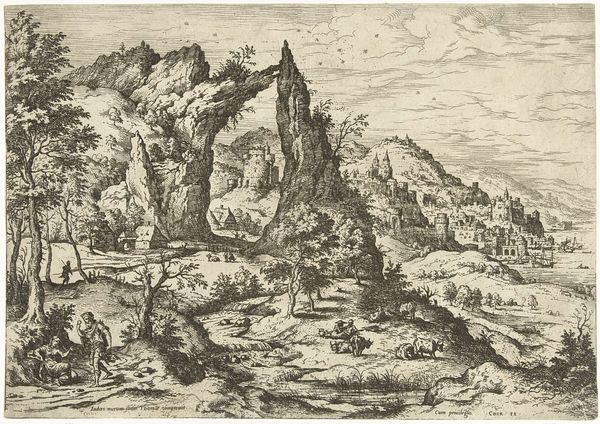
engraving
#
baroque
#
landscape
#
history-painting
#
engraving
Dimensions: height 107 mm, width 177 mm
Copyright: Rijks Museum: Open Domain
Curator: This is Andries Stock’s "Landscape with the Temptation of Christ," an engraving dating from 1608 to 1612, and part of the Rijksmuseum collection. Editor: The world looks harsh but still inviting. What strikes me first is this detailed landscape; a sprawling vista carved with such fine lines that create shadows and a very specific feeling. Desolation maybe? And then, far off in the distance, a figure perched on a rock face, with someone else at his shoulder... I'm feeling isolation despite the breadth. Curator: Yes, that combination of breadth and detail creates a paradox, doesn't it? The Baroque era, with its dramatic flair, often employed such devices. Stock uses the vast landscape, typical for landscape paintings, not as a mere background, but to amplify the psychological drama of Christ’s temptation by the Devil, which you see enacting. Note how that tiny figure seems dwarfed by everything, yet the textures and patterns lead the eye relentlessly up and out to it. Editor: Absolutely! It’s like the world itself is pressing down, tempting and testing. I see what you mean, it is an almost theatrical backdrop. What are those inscriptions along the bottom? Curator: They are Latin inscriptions adding to the narrative, moralizing on Christ's temptations: "Quid prodest vitae societas homines, loca sola securat?" translating roughly to "Why does society benefit men; a lonely place secures," and then "Si cepisti Christum es ausus qui tendere contra," roughly "If you've captured Christ you are bold to make effort against." The texts create a stage to further reinforce a lesson and solidify Christ's plight. They certainly offer a lens through which Stock wanted viewers to process the image. Editor: Those translations truly shift my view; this isolated image transforms into an allegory, not merely about Christ's trials, but about human fallibility. It suggests safety, if not enlightenment, in solitude. Curator: Precisely. This artwork underscores the period's didactic and politically charged relationship with images, while reflecting Stock’s sophisticated engagement with both landscape traditions and religious storytelling, something artists continue to debate even today. Editor: Seeing that all mapped out is interesting. It definitely changes my appreciation of that little isolated world captured in this landscape.
Comments
No comments
Be the first to comment and join the conversation on the ultimate creative platform.
